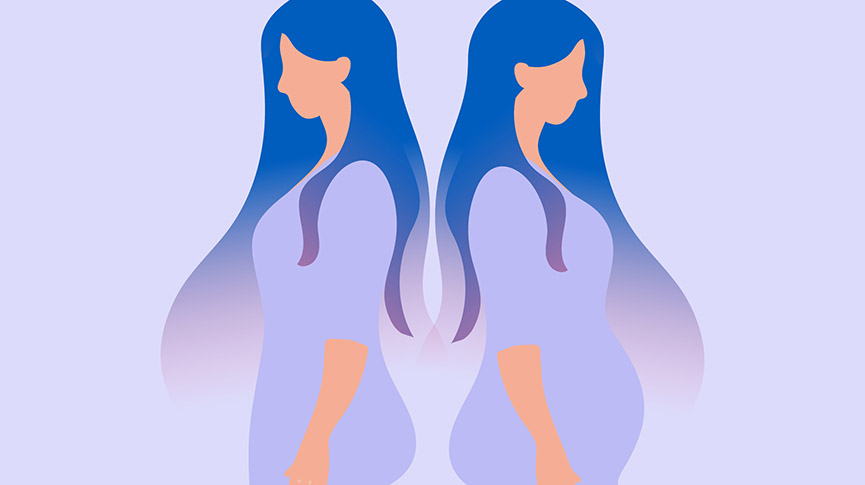7 Things They Don’t Tell You About Your Postpartum Body

Women love to discuss the highs and lows of being pregnant, from glowing skin to swollen feet. However, it’s much less common for us to talk about the physical changes that come after we bring our children into the world. Perhaps you’re embarrassed or worried that it sounds like complaining, but the reality is that you should talk about it! You’ve just done something amazing, and it’s totally normal that your body might be a little changed. Knowing what to expect during the first few weeks is key to a healthy recovery, so here are a few things they might not have told you and a couple of tips on how to handle them.
1. You’ll Still Look Pregnant
It took about 9 months for your body to be able to accommodate your little one, so understandably it might take at least a few months to get everything back into their pre-baby positions. Not to worry, though, your uterus, which can stretch to 200% of its normal size during pregnancy, will contract and shrink back down. You can also start mild exercise like walking or modified abdominal exercises to bring that baby belly back under control. Just don’t overdo it, a little bit of movement is good, but too much might set you back in your recovery.
2. You’ll Continue to Bleed for Quite a While
While the baby is gone your body still has a lot of extra material to dispose of. This is called lochia and it’s similar to having a very heavy, very long period, and is your body’s way of ridding itself of the uterine lining and extra fluid built up to support the baby. It lasts from 2-6 weeks and might range in color from pink to brown to a clearish-yellow. Pads are a good investment, but try a few styles first to see what’s most comfortable, then buy a ton!
3. It’s Going To Be Pretty Tender Down There
If you’ve given birth vaginally, chances are it’s going to be a little while until the swelling and bruising subside. During labor your muscles, ligaments, and skin stretch A LOT. Some women even experience vaginal tears or the doctor might perform an episiotomy (cutting the area between the anus and vulva) to make delivery easier and avoid more serious tearing. You can use a sitz bath to soothe and cleanse the area and a donut shaped cushion to keep the pressure off of that area while you sit normally. However, you should also start Kegel exercises – the conscious contraction of your pelvic floor muscles – within the first few days after delivery. They increase blood circulation, which speeds up healing and helps the tissue stay flexible as it heals.
4. You Might Pee Yourself
No matter how your little one came out of your body (cesarean or vaginal birth) that extra weight has put a lot of stress on your pelvic floor muscles, which support your pelvic organs and help control your bladder. Kegels are crucial in preventing and combating those little urine leaks. For the first 6 weeks you should just do Kegels on your own, but after you’ve fully healed (your doctor will tell you when), you can up your game with a smart Kegel exerciser that personalizes your routine and helps get your pelvic floor back in shape faster.
5. Peeing Hurts
Thanks to the shifting and stretching of body parts during childbirth it can be pretty painful the first few times you pee, and extremely painful once you need to poo. Best advice: don’t wipe! Use a squirt bottle (called a peri bottle) filled with a solution of water and Epsom salts to gently rinse down there instead.
6. Hello Constipation, My Old Friend
The shift in hormones after pregnancy can continue to cause constipation long after you’ve brought your little one into the world. Just remember that the time for pushing is over, so don’t strain while on the toilet because you might do more damage to yourself. Your doctor or midwife will give you stool softeners, take them and if you need more – send your partner to the store! Also keep your diet full of fiber, so you’re not backed up.
7. Skin and Hair Changes
Remember that glowing skin and voluminous hair mentioned earlier? That was all thanks to increased levels of estrogen, but after pregnancy and especially while breastfeeding, your estrogen levels drop – causing less hair to grow and your tissue to be drier (not just on your face, vaginal dryness is also a common complaint for new moms). Once your hormones stabilize things should go back to normal. In the meantime you can invest in good moisturizer for your skin and a pH balanced feminine moisturizer for your lady parts. This is totally natural and nothing to be embarrassed about.
This list might be a little scary, but remember that not all women experience all of these changes and that most changes don’t last forever. Your body is designed for this and will recover over time (and you can always demand a bit of pampering from your partner in the process). It might be difficult with a new baby in the house, but it’s important to remember your own needs and health. Take time for yourself and spend time you’re your friends and other mothers, they’ve all been through it and probably have a wellspring of advice for you!
Please note that advice offered by Intimina may not be relevant to your individual case. For specific concerns regarding your health, always consult your physician or other licensed medical practitioners

A collective group of “lady experts” at Intimina who love sharing our personal experiences, even when they are a little too personal. We believe it’s time to start breaking down the taboos around menstruation, motherhood, and menopause, and start owning our female health.


